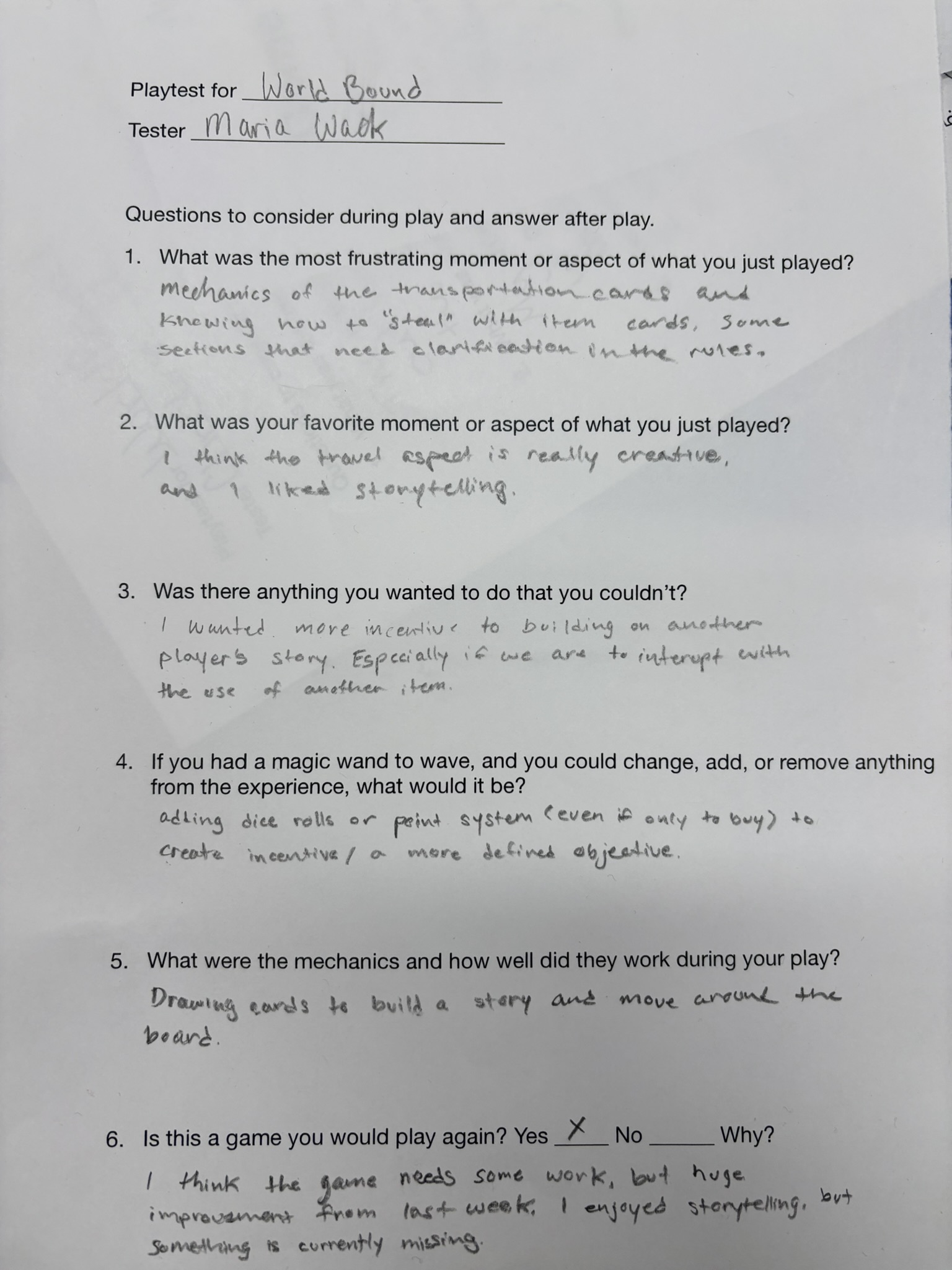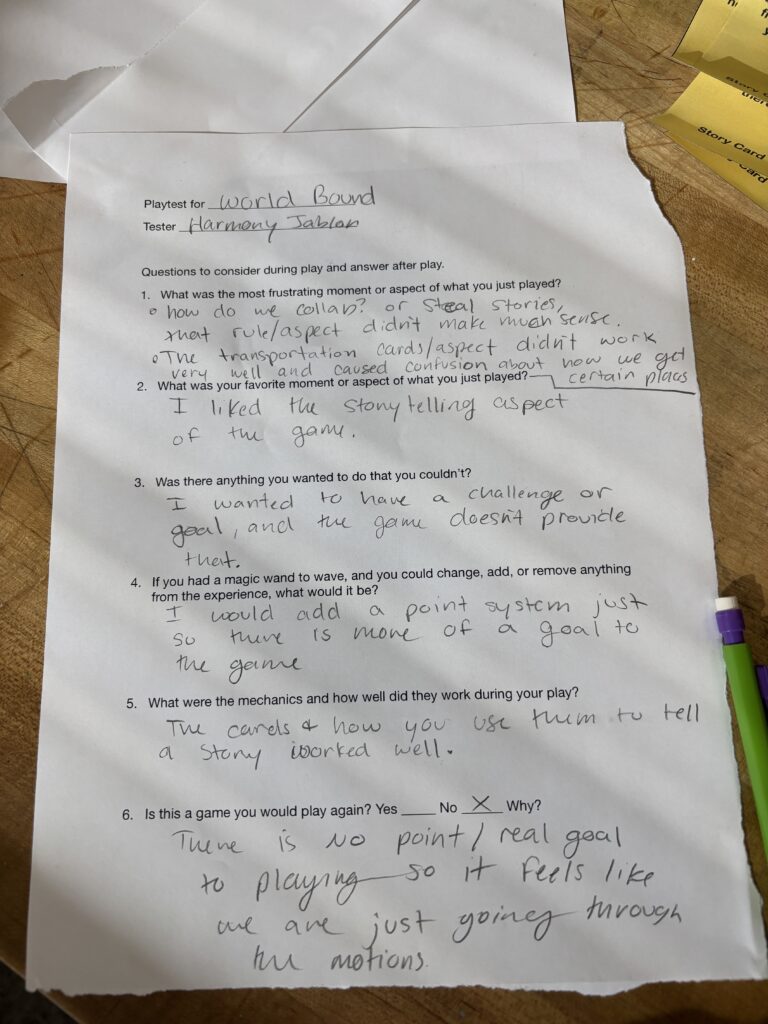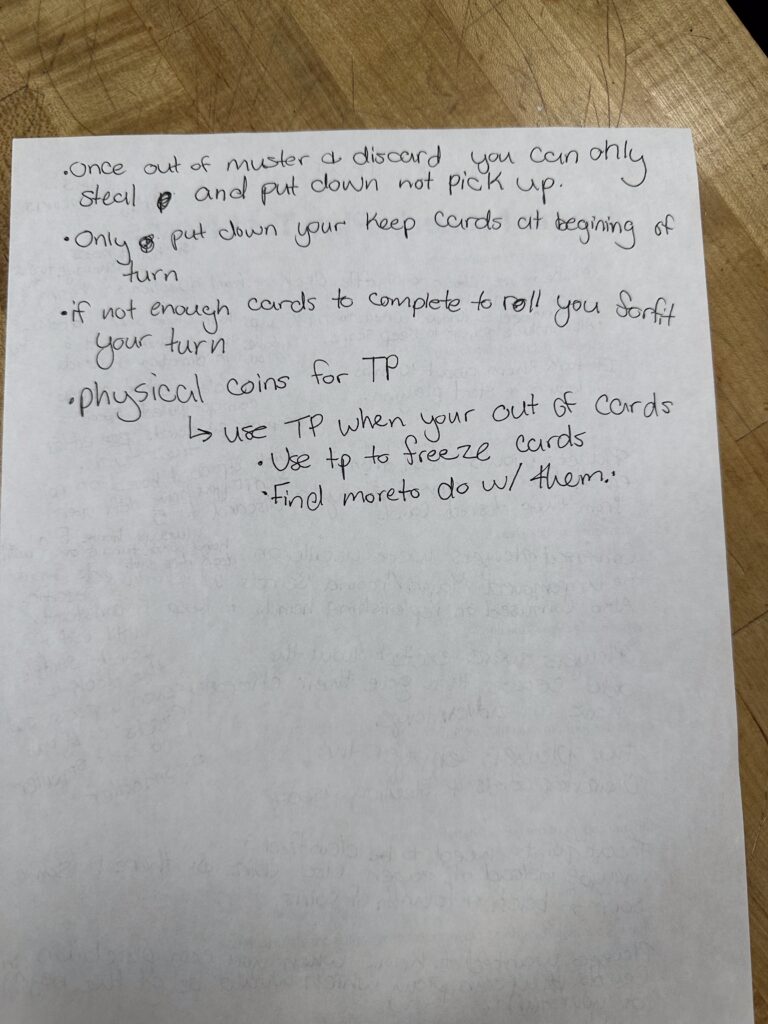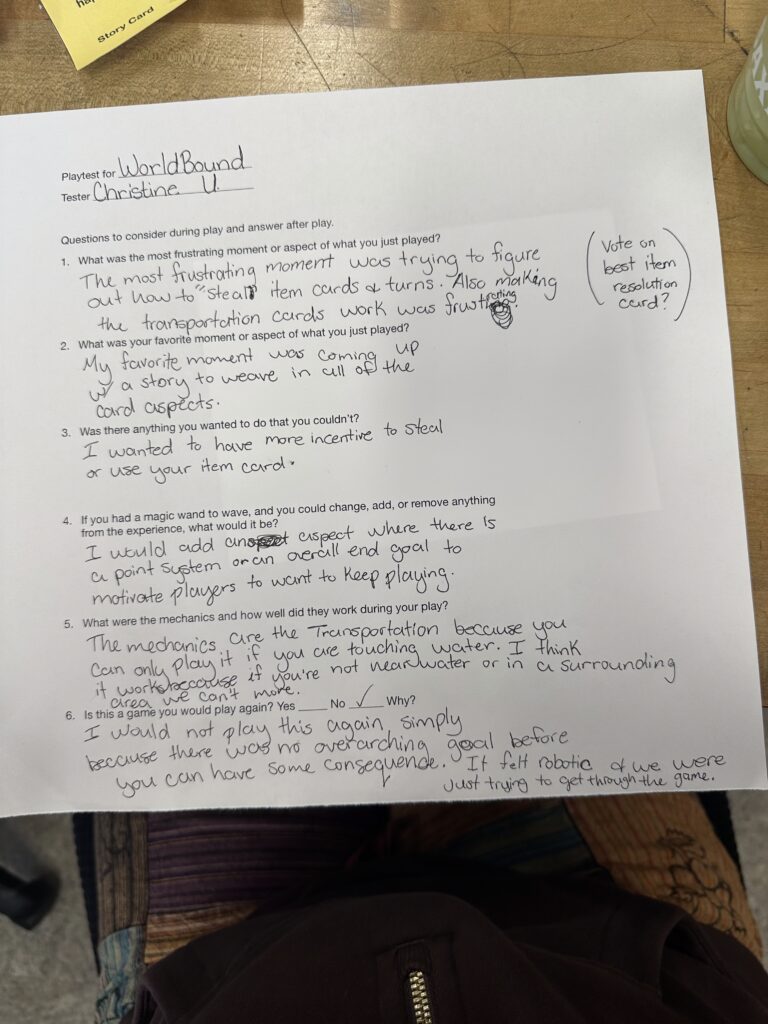
Playtest – Chakra Crusade
Playtest – World Bound Revised
Game Analysis 10/16- Harmony Jablon
Rules for Power!
Trick or Treat/Play Test notes
Trick Or Treat Game Makers Playtest
Power Game Review
Worldbound Game Review
Playtest for Broken Mime
- What was the most frustrating moment or aspect of what you just played? I think that the list of tasks that the players are supposed to mimic need refinement. Some of them seemed way too easy, while others felt nearly impossible.
- What was your favorite moment or aspect of what you just played? I like the way that it stimulates humorous table talk. It brings out some personality in players. It involves quite bit of movement, so everyone gets a chance to perform fairly regularly, while others are kept entertained. There’s not much time for boredom.
- Was there anything you wanted to do that you couldn’t? No, not off the top of my head.
- If you had a magic wand to wave, and you could change, add, or remove anything from the experience, what would it be? With a change in the mechanics that keep the difficulty roughly the same throughout all the tasks, the game could be a new spin on the old Charades classic.
- What were the mechanics and how well did they work during your play? The mechanics were competitive and team/turn based. They worked well. The rules were clear and easy to follow. The pace of the game felt good.
- Is this a game you would play again? Absolutely. I think this game would be great at parties. I could see different versions sold for adults as well as children. I think it’s also one of those games were a little bit of alcohol for social lubrication could really take the fun to a new level of fun and funny.
Game Response Questions – Honey Heist
Was it fun? Absolutely, once we all got into the spirit.
What were the player interactions? The player interactions were quite humorous, as we all pretended we were bears trying to do uniquely human tasks.
How long did it take to learn? Since the game involved more of a sandbox experience with no turn based rules, I feel like it took more time getting into the story than it did learning the rules.
What was the most frustrating moment or aspect of what you just played? I think the most frustrating aspect is that the game seemed only as interactive as the least interactive player.
What was your favorite moment or aspect of what you just played? The laughs. The laughs. The laughs. I really enjoyed the character creation sheet, both pages.
Was there anything you wanted to do that you couldn’t? I wanted a simpler way to collaborate with my teammates. The story kinda kept us apart.
If you had a magic wand to wave, and you could change, add, or remove anything: I would add more depth to the bear characters, including attribute scores.
Is this a game you would play again? Yes, because I enjoy the humor, socializing, and open ended structure.
Analyze the game using the 3 act structure. The opening act would be the setting up of the characters with roles and attributes, along with a goal/statement of purpose. The second act involves the majority of the fun, where each player adds their own unique personalities to their humorous roles as bears trying to steal honey.
What are the collaborative and or competitive aspects of the game? I found the entire game to be collaborative.
What is the game’s metaphor and which of the game’s mechanics standout? The game mechanic that stood out the most was the lack of game mechanics. Aside from act 1 (in which players learn their roles) and act 3 (where the players actually end up as a bear or a criminal) are we bothered by the mechanics of starting and finishing the story. The second act, where the majority of the gameplay takes place, is fairly open ended.
Playtest for Quads
- What was the most frustrating moment or aspect of what you just played? In my opinion, the game felt much too much like poker, and therefore didn’t feel very compelling to me.
- What was your favorite moment of aspect of what you just played? I enjoyed to social aspect of the game. Much like poker, friendly crosstalk is allowed and can add to the enjoyment of the game.
- Was there anything you wanted to do that you couldn’t? I felt like the pace of the game was much too fast. I wanted to slow things down.
- If you had a magic want to wave, and you could change, add, or remove anything from the experience, what would it be? I would definitely add more variation and depth to the gameplay, to move it past the goal of acquiring simple-ish poker hands.
- What were the mechanics and how well did they work during your play? The mechanics were familiar and smooth.
- Is this a game you would play again? No, simply because the game seems very similar to poker, and I’m not enthusiastic at all about poker.
New Ideas on Collecting
(apologies for posting this so late – better late than never I guess)
- Set amount of cards based on the number of players. To begin you take turns picking all the cards one at a time (strategy/psychology of the game in paying attention to the cards others choose) There’s also a money pile. Then based on what cards you took, you take action against each other and take whatever money you get from what happened. You do this three times and whoever has the most money wins.
- Building the perfect music company – trying to collect the most “talented” artists – you start with base characters and throughout the game build up their strengths (and sometimes weaknesses) to create the most talented group or company of musicians/singers
- Society kind of thing where you build your army for world dominance or just your quiet little villages – so like amassing funds, resources, people, homes, etc etc
- Collecting design pieces/tiles that you must try to replicate a design but you are picking up pieces every round and can lose certain pieces that don’t allow you to complete the design so it’s a sort of race to complete and gather correct pieces fastest
- Hidden Objectives kind of game – there’s something you have to complete but noone knows so you gotta secretly work toward a goal of sorts.








